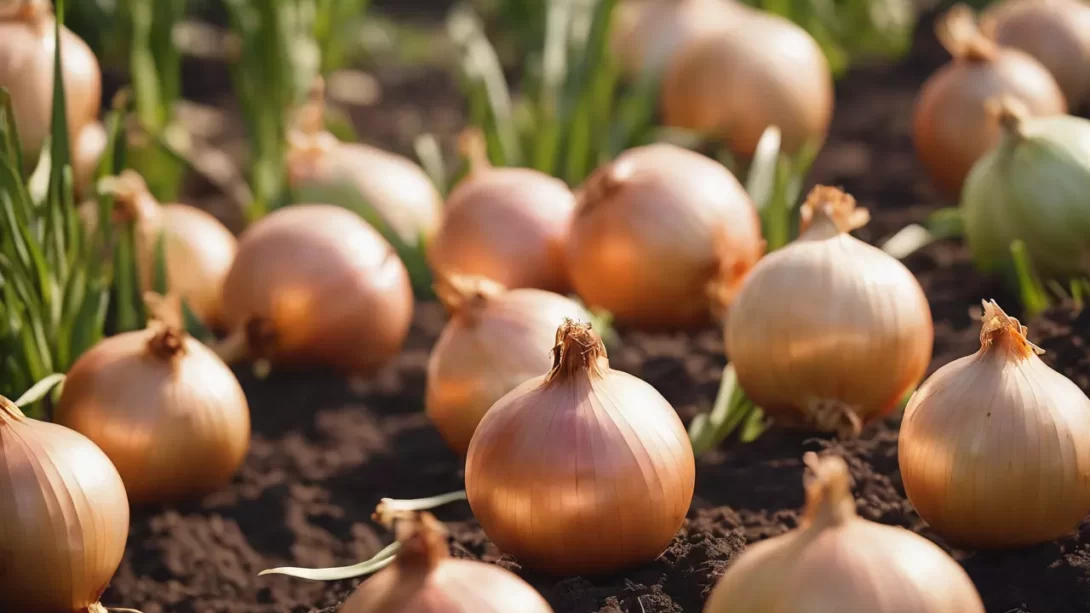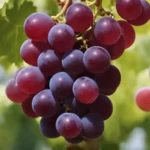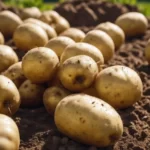Growing onions in Oklahoma can be highly rewarding for gardeners. The state’s diverse climate and soil conditions are conducive to a range of onion varieties. However, the key to a successful harvest lies in planting at the right time. This article will guide you through the optimal onion planting schedule in Oklahoma, ensuring your gardening efforts yield the best results.
Oklahoma’s Climate
Oklahoma’s climate varies from humid subtropical in the east to semi-arid in the west. This range influences not only the planting times but also the types of onions that will thrive. The state is divided into several climate zones, each with slightly different planting windows. Generally, Oklahoma experiences hot summers and mild winters, which must be considered when planning your onion planting schedule.
The state’s growing season typically begins earlier than in more northern regions, offering a longer period for cultivating a variety of vegetables. Understanding the specific climate zone of your area in Oklahoma is crucial for determining the most suitable planting time for onions.
Optimal Planting Times for Onions in Oklahoma
In Oklahoma, the ideal time to plant onions largely depends on the variety you choose. Planting can generally start in late winter to early spring. This timing allows the onions to establish themselves before the heat of summer intensifies.
Short-day onions, which require fewer daylight hours to form bulbs, are ideal for planting in southern Oklahoma. These can be planted as early as late January to February. In northern parts of the state, short-day onions should be planted a bit later, around late February to early March.
For intermediate-day and long-day onions, which need more daylight hours for bulb formation, planting should typically occur in March. These varieties are better suited for the longer days of late spring and early summer in northern Oklahoma.
Selecting the Right Onion Varieties
Choosing the correct onion variety is vital for a fruitful harvest in Oklahoma. The state’s climate supports a range of onion types, but selecting a variety that aligns with your local growing conditions is key. Short-day onions, like ‘Texas Grano’, thrive in southern Oklahoma due to the region’s shorter winter days. Intermediate-day onions, such as ‘Candy’, are versatile and can perform well in most parts of the state.
Long-day onions, including varieties like ‘Walla Walla’ and ‘Yellow Sweet Spanish’, are more suitable for northern Oklahoma. These varieties benefit from the longer daylight hours of late spring and early summer in this region. When choosing an onion variety, also consider factors such as flavor, size, and storage capabilities to suit your culinary preferences and needs.
Soil Preparation and Planting Location
Onions require well-drained, nutrient-rich soil to grow effectively. Preparing your garden bed with compost or well-rotted manure can enhance soil fertility and structure. The ideal soil pH for onions is between 6.0 and 7.0. Conducting a soil test can provide valuable insight into any necessary amendments to optimize your soil conditions.
Select a planting site that receives full sun, as onions need plenty of direct sunlight to develop properly. Ensure the site is clear of weeds and has good air circulation to promote healthy growth and reduce the risk of disease.
Planting Methods
When planting onions in Oklahoma, you can start with sets, transplants, or seeds. Onion sets, which are small, pre-grown bulbs, are a popular choice for their ease of planting and shorter maturation period. Plant the sets with the pointed end up, just below the soil surface, spacing them about 4 to 6 inches apart in rows 12 to 18 inches apart.
For those starting with seeds, begin indoors about 6 to 8 weeks before the last expected frost. Transplant the seedlings to your garden when they are a few inches tall, and the risk of frost has passed. Transplants require similar spacing to sets.
Watering immediately after planting is essential for establishing the onions. However, avoid overwatering, as onions are prone to rot in overly moist conditions. A steady watering routine, providing about an inch of water per week, is ideal for onion growth.
Care and Maintenance
After planting, consistent care is essential for healthy onion growth. Regular watering is crucial, especially during dry spells. Onions prefer a consistent moisture level, so aim for about one inch of water per week, either from rainfall or supplemental watering. However, be cautious not to overwater, as excessive moisture can lead to root rot.
Fertilization is another important aspect of onion care. A balanced fertilizer, preferably higher in nitrogen, can be applied every few weeks. Be mindful to stop fertilizing once the onions begin to form bulbs; at this stage, the plants need less nitrogen and more potassium and phosphorus for proper bulb development.
Weeding is vital since onions compete poorly with weeds. Regularly remove weeds by hand or with a hoe, taking care not to disturb the onion roots.
Pests and diseases can affect onions, with common issues in Oklahoma including onion thrips and white rot. Regularly inspect your plants and use appropriate organic or chemical treatments if necessary. Crop rotation and good sanitation practices can also help prevent disease.
Harvesting and Storage
Onions are ready for harvest when their tops begin to yellow and fall over, usually in late summer or early fall. Gently pull or dig the onions out of the ground, and allow them to cure on the soil surface for a few days to a week, depending on the weather. Curing helps to dry the outer layers of the bulb, preparing them for storage.
For long-term storage, move the cured onions to a cool, dry, and well-ventilated area. They can be stored in mesh bags or hung in bunches. Ensure the storage area is free from humidity to prevent rot.
Conclusion
Planting onions in Oklahoma requires an understanding of the right planting times, selecting appropriate varieties, and providing proper care throughout the growing season. By following these guidelines, you can enjoy a successful harvest of flavorful onions. Whether for immediate use in your kitchen or for storage, growing onions adds value and enjoyment to your gardening experience in Oklahoma.



